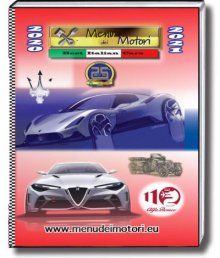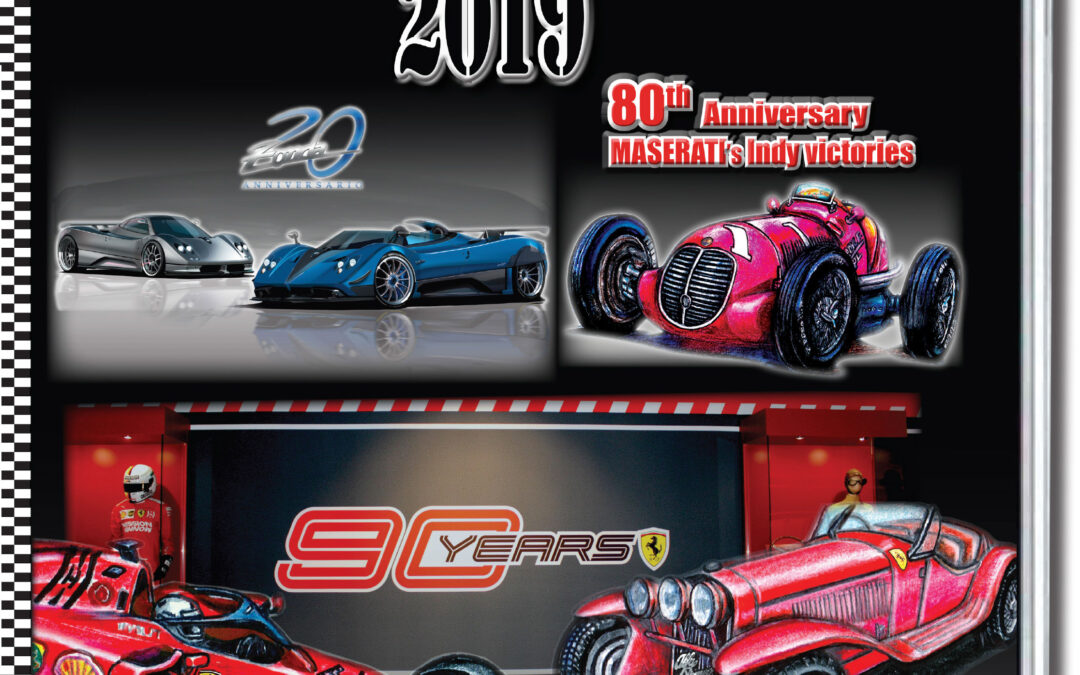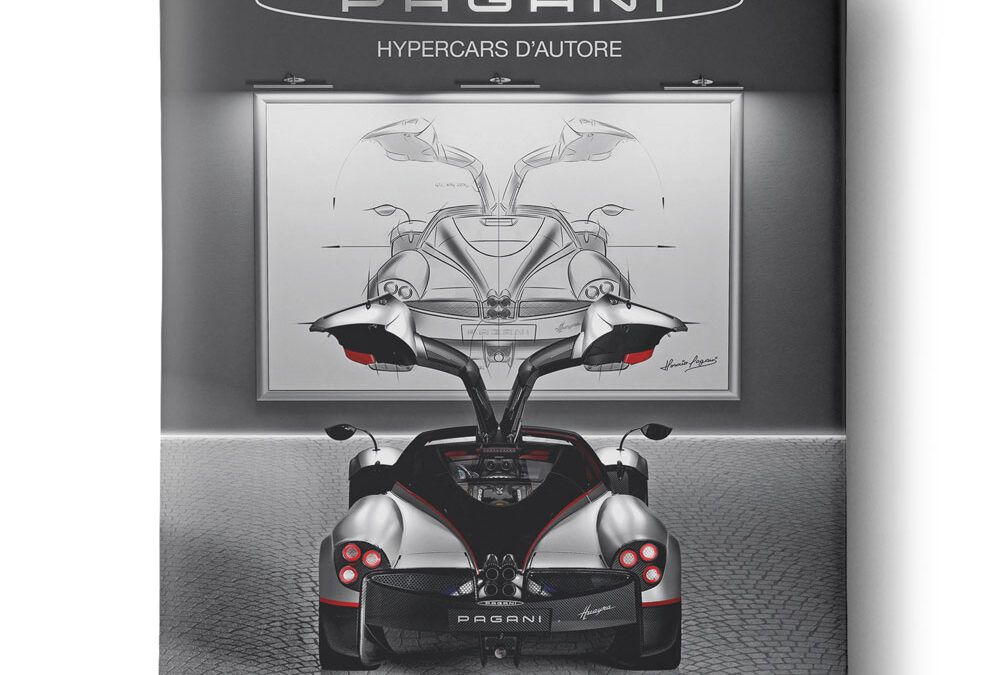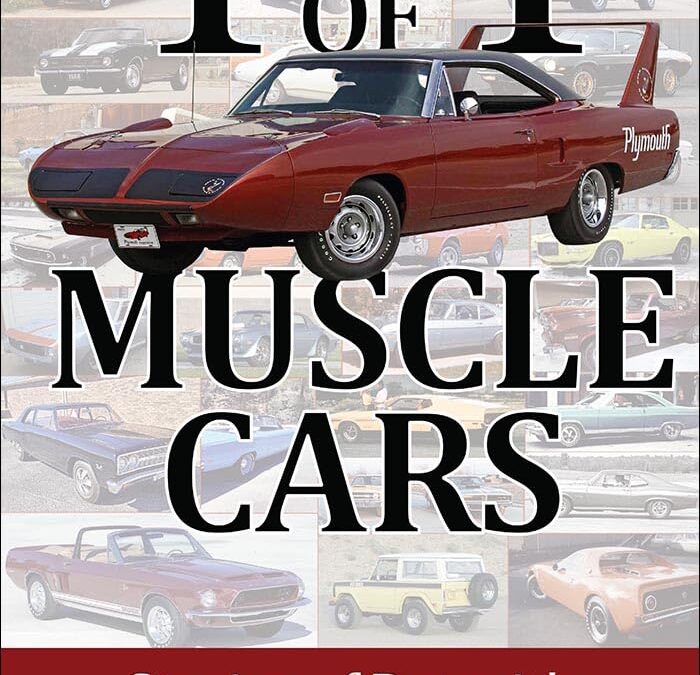
Learn about the rarest muscle cars ever produced with this new book.
In the world of muscle cars, many were produced and sold in large enough quantities that they would be considered special but not particularly rare at the time of production. The Boss 429 and Plymouth Superbird were produced for racing homologation reasons, and since they were very expensive to produce, the manufacturers ensured that they would be rare. However, there is rare, and then there is rare.
Prototypes and special factory builds, factory production cars, and super car tuners and builders are all covered in this new book by muscle-car historian Wes Eisenschenk. Some are single examples, some are very close to being the last remaining example, and all are extremely rare. Some have no surviving example known to exist. Featured cars include a Boss 429 Cougar, a 1971 Pontiac Ventura II Sprint 455, a 1965 Chevelle 300 COPO car with the L78 option, and a 1970 FK5 Deep Burnt Orange Metallic Superbird. Dealer promotional specials include a 1968 AMC AMX Von Piranha, a 1970 Dick Harrell LS6 454 Camaro, and a 1973 Nickey Chevrolet 427 Nova.
These are cars that you will read about but likely never see. For a fun ride through muscle-car history and great stories of the rarest muscle cars ever produced, add this book to your automotive library today.
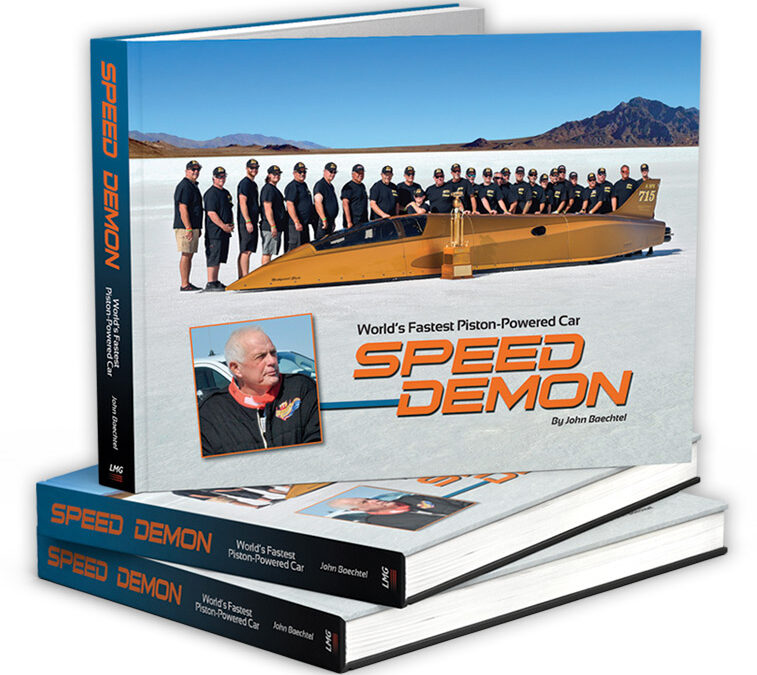
CHASING 5OO
Learn What it takes to plan,build and campaign a land speed record cart capable of achieving 500 mph
Veteran landspeed racer John Baechtel has released a new full color, photo rich history and technical account on the original record setting Speed Demon and the more formidable Speed Demon II which has already set new records at Bonneville
It includes full coverage of the Speed Demon’s extraordinary history and performance record, the unfortunate crash and subsequent construction of the all new Speed Demon II. The new car build is covered in exacting photographic detail so readers can see and understand every component of this amazing landspeed racing car.
George Poteet’s awesome Speed Demon has captured the attention of the world wide racing community with it’s clockwork ability to tear off repeated 400 mph blasts at the Bonneville Salt Flats. When an unfortunate incident caused the car to crash in 2014, an opportunity to build an even better and faster Speed Demon presented itself. See the complete history of the Speed Demon and the detailed buildup of the new car all in full color here.
Take a full color deep dive into the inner workings of the Speed Demon.
George Poteet’s Speed Demon defies nearly all traditional norms for land speed record breaking. It’s logged 55 runs over 400 mph and has captured nine Hot Rod Magazine Top Speed trophies.
It only has one engine, but it’s currently a turbocharged big block Chevy beast. Learn its secrets and why it began as a small block engine. It’s rear-wheel drive in an all-wheel-drive environment. It’s driven by a self-made, nerves-of-steel southern gentleman who places all his faith in crew chief Steve Watt, his engine builder, Kenny Duttweiler, and the extraordinarily talented build crew at Maxwell Industries — the Men in Black.
After a walk-away crash in 2014, an all-new leaner, meaner Speed Demon was constructed at Maxwell. Records continued to fall, culminating in a new 470 mph record and a staggering 481 mph exit speed in 2020. This is story of perhaps the most successful land speed car ever and why it’s so damned fast.

First launched in 1965, the Boeing 737, by many measures, is the most successful and long-standing jetliner in the history of aviation. This volume provides an in-depth look into the story of this extremely significant jetliner and the environment that has contributed to this amazing story. Many of the actual people who designed, marketed, and flew this airplane have contributed greatly to this book, with widespread quotes throughout. This study is rich with many photographs and drawings that are published for the first time and take the reader deeper into the story. Included in this book is a technical chapter that defines the systems and provides a detailed pilot’s walk-around. For the hobbyist, a well detailed, pictorial chapter demonstrates the building of airliner models, and provides many techniques for new and experienced modelers alike.

The United States Navy’s first ironclad warship rose to glory during the Battle of Hampton Roads on March 9, 1862, but there’s much more to know about the USS Monitor. Historian John Quarstein has painstakingly compiled bits of historical data gathered through years of research to present the first comprehensive picture of the lives of the officers and crew who served faithfully in an iron ship unlike any vessel previously known. “The Monitor Boys,” a moniker the men gave themselves, is a reflection of how these hundred-odd souls were bound together through storms, battles, boredom and disaster. Just living aboard the ironclad took uncommon effort and fortitude. Their perseverance through the heat, stress and un-seaworthiness that defined life on the ship makes the study of those who dared it a worthy endeavor. Many recognized that they were part of history. Moreover, the Monitor Boys were agents in the change of naval warfare. Following Quarstein’s compelling narrative is a detailed chronology as well as appendices including crew member biographies, casualties and statistics and dimensions of the ship. Readers can dive into the world of the Monitor and meet William Flye, George Geer and the rest of the men who risked everything by going to sea in the celebrated “cheesebox on a raft” and became the hope of a nation wracked by war.
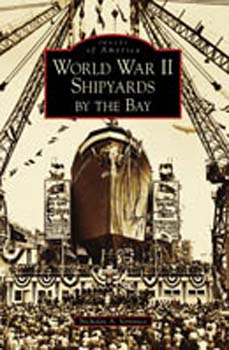
In the dark, frenzied years of World War II, the San Francisco Bay Area was the geographic center of a $6.3 billion West Coast shipbuilding industry. Stretching from the Golden Gate to Vallejo to Sunnyvale, 14 Bay Area yards launched many of the ships that helped save the free world. Basalt Rock of Napa, Bethlehem Steel of San Francisco and Alameda, Hunters Point and Mare Island Naval Shipyards, Joshua Hendy Iron Works of Sunnyvale, Marinship of Sausalito, Permanente Metals in Richmond, and Western Pipe and Steel in South San Francisco are names that still conjure memories for many locals of one of the most impassioned war efforts in human history. Offering new opportunities for African Americans and women, recruiters searched the nation for workers who relocated here by the thousands. These motivated men and women delivered Liberty cargo ships like the SS Robert E. Peary, built in seven and a half days, a shipbuilding record that stands to this day.

Industrial Strength Design: How Brooks Stevens Shaped Your World is a long overdue introduction to the work of visionary industrial designer Brooks Stevens (1911-1995). Believing that an industrial designer “should be a businessman, an engineer, and a stylist, in that order,” Stevens created thousands of ingenious and beautiful designs for industrial and household products — including a clothes dryer with a window in the front, a wide-mouthed peanut butter jar, and the Oscar Mayer Wienermobile. (“There’s nothing more aerodynamic than a wiener,” he explained.) He invented a precursor to the SUV by turning a Jeep into a station wagon after World War II, and streamlined steam irons so that they resembled aircraft. It was Brooks Stevens who, in 1954, coined the phrase “planned obsolescence,” defining it as “instilling in the buyer the desire to own something a little newer, a little better, a little sooner than is necessary.” This concept has since been blamed for everything from toasters that stop working to today’s throwaway culture, but Stevens was simply recognizing the intentionally ephemeral nature of a designer’s work. Asked once to name his favorite design, he replied, “none, because every one would have to be restudied for the tastes of tomorrow.”
This book, which accompanied an exhibit at the Milwaukee Art Museum (the repository for Stevens’s papers), includes 250 illustrations of designs by Stevens and his firm, many in color. Glenn Adamson, exhibition curator, contributes detailed studies of individual designs. John Heskett, Kristina Wilson, and Jody Clowes contribute interpretive essays. Also included are a description of the Brooks Stevens Archive and several key writings by Brooks Stevens.

Grand Prix racing in the late 1920s through the early 1930s was “owned” by the powerful, state-backed Italian teams with drivers like Nuvolari and Varzi, but by the end of the Thirties, the Germans dominated. Driving Forces by Peter Stevenson tells the human story of the men, their women, and their machines that made the German dominance possible. It is the classic story of daring individuals facing the ultimate challenge both physically and morally as these racing drivers drove under the Nazi swastika, but for themselves.
Driving Forces focuses on the lives of two of the world’s greatest racing drivers: Rudolph “Rudi the Rain Master” Caracciola and Bernd Rosemeyer. The cast of characters reads like the European roll call of the Grand Prix greats: Louis Chiron (France), Achille Varzi (Italy), Giuseppe Campari (Italy), Dick Seaman (Great Britain), Hans Stuck (Germany), and, the greatest of them all, the Maestro Tazio Nuvolari (Italy). Peter Stevenson follows the career of Rudi Caracciola from his youthful “great escape” from the occupying Belgian forces to his first ride with Mercedes and then on to greatness as the top driver for that German team. Caracciola’s life is intertwined with that of his greatest rival Bernd Rosemeyer of the Auto Union team. Rosemeyer’s story is a tragic one of a youthful, talented, and well-loved racer whose love affair with racing and Germany’s outstanding aviatrix, Elly Beinhorn (the Amelia Earhart of Germany), led to his death in 1938.
Driving Forces is also the story of the rivalry between Mercedes Benz and Auto Union, led by the brilliant designs of Dr. Porsche, for the Grand Prix championship of Germany and the world. The ultra-sophisticated supercharged machines of Mercedes, Germany’s premier automaker, faced Porsche’s ingeniously designed rear-engined V-12 and V-16 behemoths. Capable of between 500 and 600 horsepower, the cars easily reached speeds of over 200 miles an hour and in 1938, at speed record attempts on the Autobahn in Germany, the German cars reached speeds of over 270 miles per hour on a regular paved road.
But this is not merely a story about race cars. It is primarily a tale of individual courage – the drivers and their wives and lovers who faced death on and off the race course, for this was a time in Europe when fascism was on the rise sweeping up a continent and then the world. These racing drivers and their loved ones dealt with the risks of racing such powerful machines and of dealing with one of history’s most terrifying dictators – Adolf Hitler. That they survived either of these challenges is a testament to their courage and fortitude – some, however, did not. Driving Forces is the story of those challenges, those successes, and those losses. It is a human story, brilliantly told against the exciting background of international Grand Prix racing and the growing maelstrom of the Third Reich.
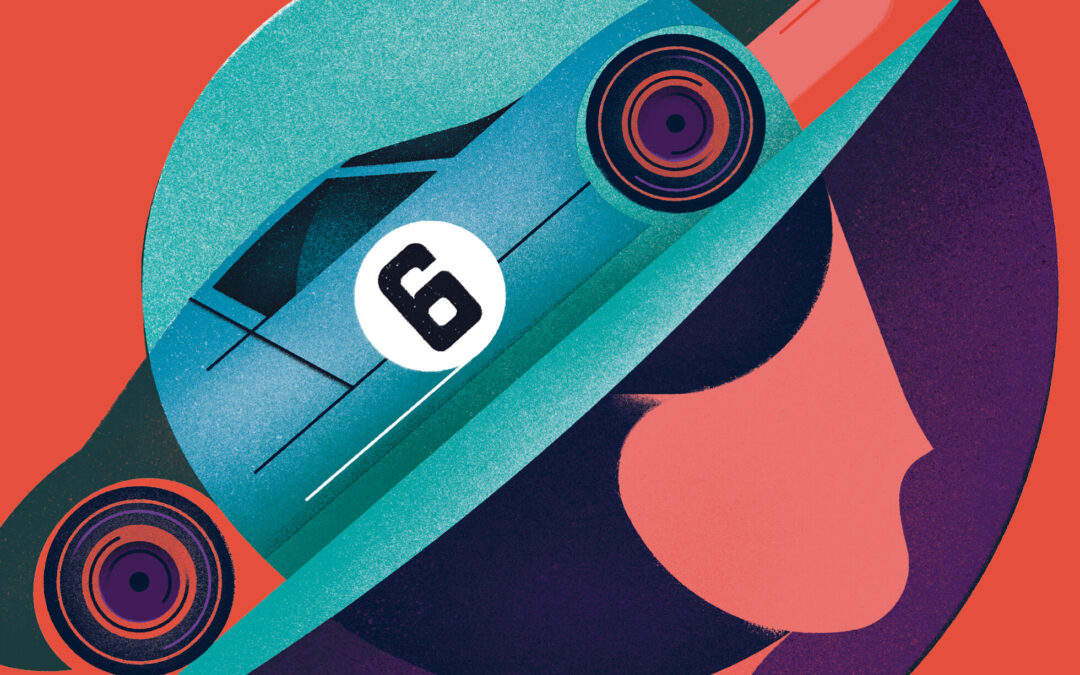
Concours Year 2023: The only book to record every class and Best in Show Winner from over 50 of the greatest global concours of 2023.
Now in its fifth edition, The Concours Year, presented by Weathertech, is a celebration of the greatest Concours d’Elegance events from around the world. The book includes Special Awards, Best in Class and Best in Show results from more than 50 concours. The Concours Year is the most comprehensive review of the concours scene published. Nearly 300 pages, hardbound and with more than 1000 images of some of the world’s most important cars, this is a book to treasure.
A Year in Concours: The very best of 2023
- Class and Best in Show Winners from Concours events in 2023
- Concept Lawn
- Concours People: The Entrant – Fritz Burkard; The Judge – David Lillywhite; The Restorer – Clark & Carter; The Organiser – Byron DeFoor
- Highlights and Trends of 2023
- Concept Lawn (new concept cars shown at concours events throughout the year)
- Looking Ahead to 2024
- The India Experience – a behind the scene look at the 21 Gun Salute Concours d’Elegance in Delhi
- Concours Judging Rules Explained – a judging rules deep-dive written by the experienced judge Chris Kramer.
Also introducing the inaugural Concours Year Awards.
And documenting Class and Best of Show results from the following Concours:
Cavallino Classic Middle East, 21 Gun Salute, Cavallino Classic Palm Beach, Concours in the Hills, Intermarque Concours d’Elegance, The Amelia, Sydney Harbour Concours, La Jolla Concours, Motorcar Cavalcade, Lugano Elegance, Cavallino Classic Modena, Concorso d’Eleganza Villa d’Este, Concours on Savile Row, Valetta Concours, Greenwich Concours d’Elegance, London Concours, Cincinnati Concours d’Elegance, Concours d’Elegance Suisse, Dinard Elegance, Rodeo Drive Concours, Philadelphia Concours d’Elegance, Poltu Quatu Classic, Heveningham Concours, Cartier Style et Luxe (Festival of Speed), Zurich Classic Car Award (ZCCA), Quail, A Motorsports Gathering, Pebble Beach Concours d’Elegance, Misselwood Concours d’Elegance, San Marino Motor Classic, Salon Privé, Classic-Gala Schwetzingen, Concours of Elegance Hampton Court, Radnor Hunt Concours d’Elegance, Concours d’Elegance Tegernsee, Antwerp Concours d’Elegance, Cobble Beach Concours d’Elegance, Ironstone, Detroit Concours, St Michaels, Ascona Concours d’Elegance, The Boston Cup, Audrain Newport Concours and much more!

Bunker Hill is the highest point of downtown Los Angeles, both literally and figuratively. Its circle of life has created a continuous saga of change, each chapter rich with captivating characters, structures, and culture. In Bunker Hill Los Angeles: Essence of Sunshine and Noir, historian Nathan Marsak tells the story of the Hill, from the district’s inception in the mid-19th century to its present day. Once home to wealthy Angelenos living in LA’s “first suburb,” then the epicenter of the city’s shifting demographics and the shadow and vice of an urban underbelly, Bunker Hill survived its attempted erasure and burgeoned as a hub of arts, politics, business, and tourism.
As compelling as the story of the destruction of Bunker Hill is―with all the good intentions and bad results endemic to city politics―it was its people who made the Hill at once desirable and undesirable. Marsak commemorates the poets and writers, artists and activists, little guys and big guys, and of course, the many architects who built and rebuilt the community on the Hill―time after historic time.
Any fan of American architecture will treasure Marsak’s analysis of buildings that have crowned the Hill: the exuberance of Victorian shingle and spindlework, from Mission to Modern, from Queen Anne to Frank Gehry, Bunker Hill has been home to it all, the ever-changing built environment.
With more than 250 photographs―many in color―as well as maps and vintage ephemera to tell his dramatic visual story, Marsak lures us into Bunker Hill Los Angeles and shares its lost world, then guides us to its new one.
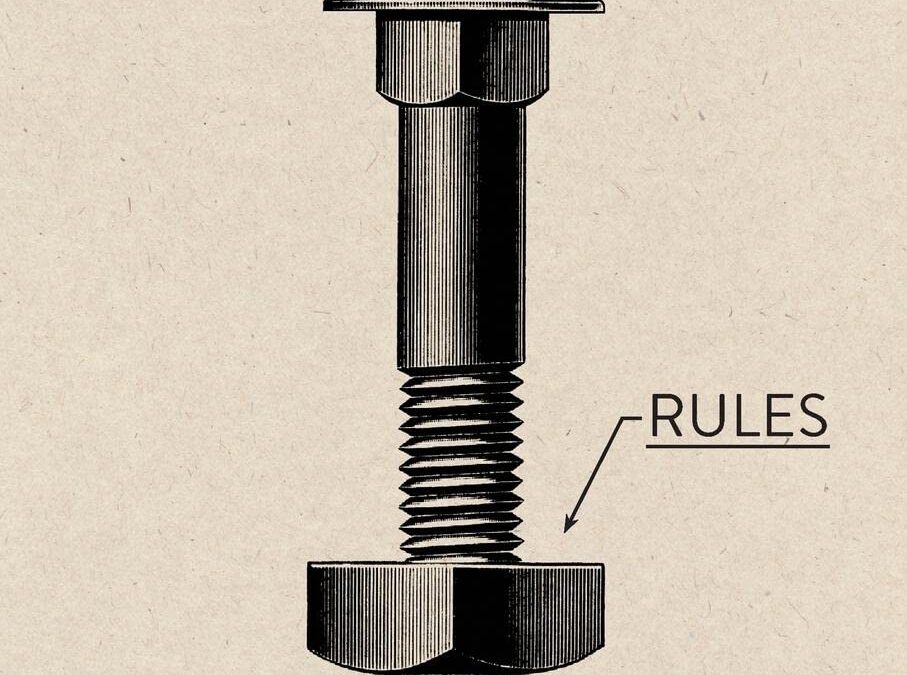
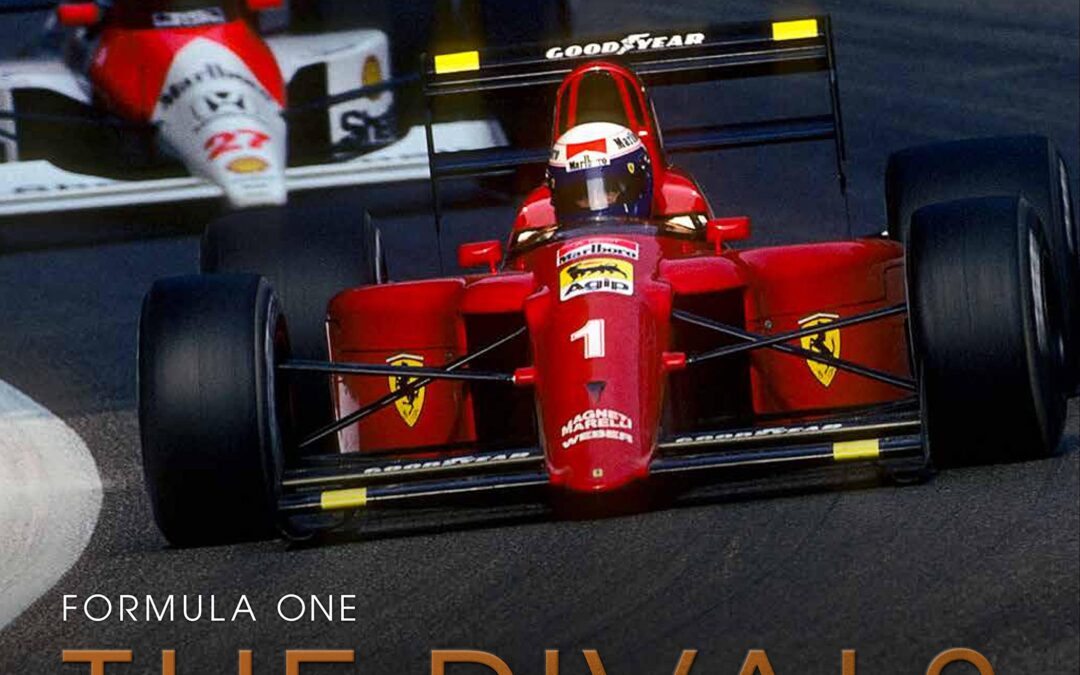
Delve into Formula One’s most iconic rivalries with stunning photography, insight from celebrated F1 journalist Tony Dodgins and a foreword by nine-time grand prix winner Mark Webber.
At the heart of Formula One lies the blistering contests and feuds between the drivers. The drama, personality and thrill of the sport is borne of these fierce duels, where only the fastest and savviest survive.
The rivalry between Lewis Hamilton and Max Verstappen is one of the fiercest we have seen in Formula One in decades. Incendiary both on and off the track, the battles between the seven-time world champion and the hard-driving Dutchman have only served to highlight the importance of these dramatic conflicts to the sport.
In Formula One: The Rivals, Dodgins identifies the most prominent rivalries since the championship’s inception in 1950, including the feud between Hamilton and Verstappen. This highly illustrated book explores the dramatic collisions between drivers vying for the top spot, the bitter wars of words as tension runs high and the controversial decisions that have captivated viewers and delivered truly thrilling racing.
From the slow burn of intense dislike between Ayrton Senna and Alain Prost to the verbal barbs dished out by Nigel Mansell and Nelson Piquet to the clash between James Hunt and Niki Lauda that inspired a Hollywood blockbuster, the rivalries include:
- Hakkinen vs Schumacher
- Hill vs Schumacher
- Alonso vs Schumacher
- Pironi vs Villeneuve
- Mansell vs Piquet
- Prost vs Lauda
- Prost vs Senna
- Hunt vs Lauda
- Hamilton vs Rosberg
- Hamilton vs Massa
- Hamilton vs Verstappen
- Vettel vs Webber
- And many more
This book is a must-read for all fans of the sport, whether you have been following F1 for decades or are a new fan drawn by the intensity of recent seasons.
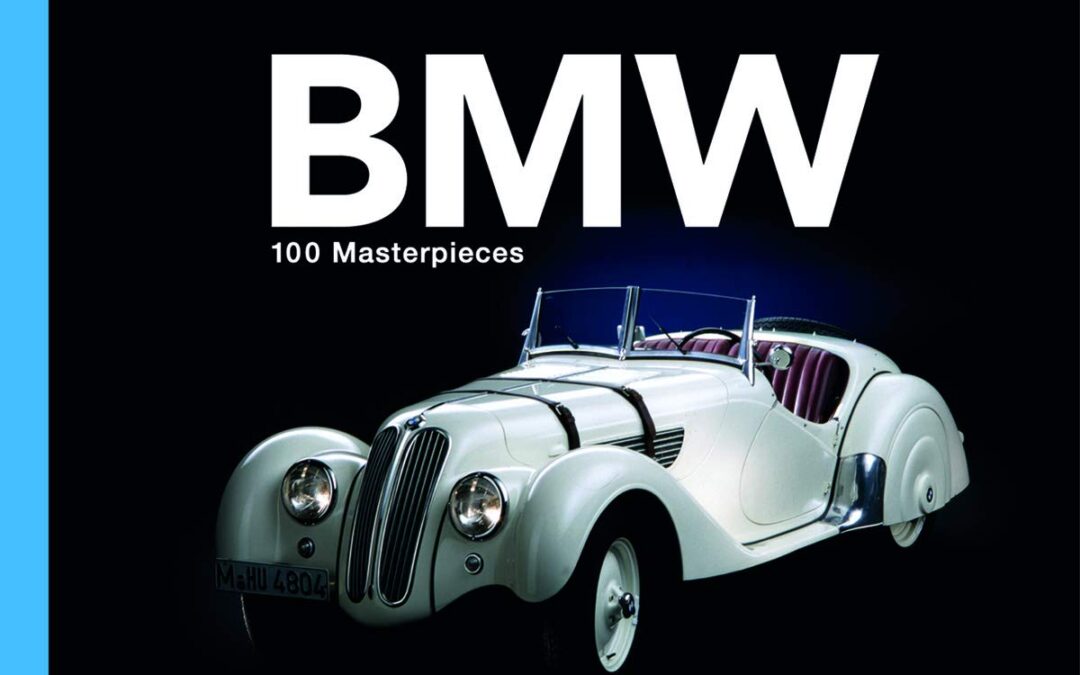
Premium automobiles. Dynamic driving experiences. Pioneering decisions in design and technology. The BMW brand stands for all this and more. From the company’s early aircraft engines to their motorcycles and today’s sleek hybrids, it has long defined the character of its brand with its slogan, “Sheer Driving Pleasure”—a promise delivered by BMW vehicles to the world and continually created anew by developers. As the company prepares to observe its centenary in 2016, this book travels back to its very first day, reflecting on one hundred years of production at the world’s leading manufacturer of top-quality automobiles and motorcycles.
Through text and images, BMW—100 Masterpieces details the company’s history, exploring the components of the BMW brand identity, selecting one hundred significant achievements, be they innovations in vehicles or the engineering process or world-renowned series and models like the famous BMW 328, the BMW Z series, or the motorcycle BMW K1. Special sections are devoted to the company’s racing program; its world records; and movie appearances, including the James Bond franchise. The book also discusses the company’s employment reforms and groundbreaking environmental decisions. Throughout the book, nearly three hundred vintage and new photographs show the evolution of this distinguished brand and the engines, motorcycles, and automobiles it produces.
Published with the aid of the BMW Museum in Munich and edited by the museum’s curator, Andreas Braun, BMW—100 Masterpieces celebrates a century of fine engineering and great automobiles while offering an absorbing look at how one of the world’s foremost vehicle manufacturers came to be.

An intimate insight into a racing life
Mike Hailwood is a legend. Arguably the world’s greatest ever motorcycle racer, he transcended eras and generations. His two-wheeled racing career began – and he initially made his name – aboard big, British single cylinder machines, then he took to Japanese and Italian four-stroke multis, before finishing on booming V-twins and two-strokes.
He went from the black-and-white era, from one-colour dark leathers and pudding basin crash helmets, to the multicoloured, full-face helmeted, sponsorship driven days of the late 1970s. He found time to do some car racing too, recording a third at Le Mans in 1969 driving a Ford GT40, winning the 1972 Formula 2 European Championship and competing in 50 F1 Grands Prix, his debut in 1963, his last in 1974.
Though the car stats are impressive, the motorcycle ones are astonishing – nine world championships, 76 GP wins, 14 TT victories, his TT victories separated by 18 years, the first 1961, the last 1979. On top of this he was awarded the MBE and then the George Medal for his bravery in rescuing fellow F1 driver Clay Regazzoni in 1973.
It is almost impossible to comprehend the tragic irony that the life of this man, who had risked and survived so much, a hero to thousands for his derring-do, was curtailed as he drove the family car to collect a fish and chip takeaway. That his daughter Michelle died alongside him adds an extra layer to the tragedy.
Mike’s son David survived the accident and here has allowed access to the family’s treasure trove of personal artefacts. These range from the mundane to the magnificent but together they tell the incredible story of Mike the Bike.
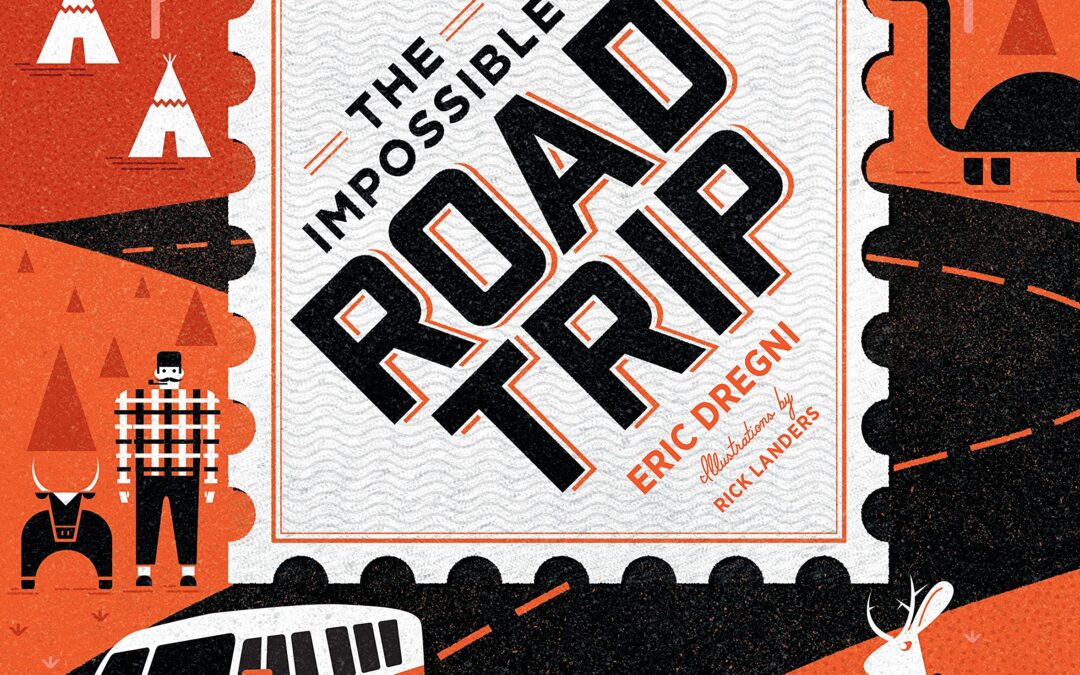
Filled with color photography, entertaining site descriptions and histories, and five unique infographic map illustrations, The Impossible Road Trip is your ultimate look back at America’s most famous—and quirkiest—roadside attractions, past and present.
The great American road trip is back. With its advantages for your health, budget, and the environment, now is the time to plan the road trip you have always dreamed of taking.
Following in the great tradition of the mid-century golden age of car travel, join the new wave of road warriors with a targeted itinerary chosen from the 150 roadside attractions explored in this colorful guide. From famous to quirky and covering all 50 states, author Eric Dregni gives you an unprecedented look at the breadth of roadside attractions in the US, illustrated in part by the photography of architectural critic and photographer John Margolies (1940–2016). Specially commissioned infographic map illustrations capture the spirit of mid-century automobile travel.
Each site depicted is accompanied by a lively and insightful history and color imagery. From autumnal New England to the gothic South, from the homey Midwest to the great expanses of the Desert Southwest, the dizzying heights of the Rocky Mountains, and the breathtaking Pacific Coast, The Impossible Road Trip encompasses it all:
- Neon-shrouded motels
- Mimetic architecture
- Tourist traps
- Roadside sculpture
- And much more
You’ll see sites both famous and esoteric, including the Cardiff Giant in Cooperstown, New York; the five-story Haines Shoe House in York, Pennsylvania; Solomon’s Castle in Florida; the world’s largest fish in Hayward, Wisconsin; one of several Paul Bunyan statues; Bob’s Big Boy in Burbank, California; and so many more.
With The Impossible Road Trip in hand, set out to discover the nation’s oft-overlooked nooks and crannies.

Richly illustrated and entertainingly written, The Big Book of Tiny Cars presents lively profiles of the automotive world’s most famous—and infamous—microcars and subcompacts from 1901 to today.
From tiny homes to little lending libraries and even tiny food, people everywhere are resetting the premium they put on size. Fact is, the automotive industry has a “tiny” history going back to the car’s earliest days.
Beginning with the Curved Dash Oldsmobile and continuing through prewar classics such as the Austin Seven and Hanomag Kommissbrot, The Big Book of Tiny Cars is truly international in scope. Witness diminutive cars like the Bond Minicar and the BMWIsetta introduced to fuel-deprived postwar Europe, and continue through the classic 1950s microcars and ’70s subcompacts, right up to today’s tiny cars and electric vehicles (EVs) fromthe likes of Smart and Fiat.
In addition to iconic curiosities like the frog-like Goggomobil Dart, the futuristic Sebring Vanguard Citicar, and the three-wheeled Reliant Robin, you’ll read about more familiar classics like the VW Beetle, MiniCooper, and Crosley Super Sport. Other manufacturers represented include Honda, Datsun, Mitsubishi, Trabant, Heinkel, Renault, and Messerschmitt, to name a few.
- Each car is profiled with an entertaining and informative history and a fact box.
- Imagery includes archival photos, period ads, and modern photography.
- In all, more than 100 cars are included, from the weird to the sublime.
Gas, diesel, or electric…tiny cars have a rich and curious heritage reflective of motorists’ concerns for their pocketbook, the environment, or both. The Big Book of Tiny Cars is your ultimate collection of microcars, minicars, bubble cars, kei cars, subcompacts, and compacts that have been built, sold, and driven all over the globe for 120 years.












